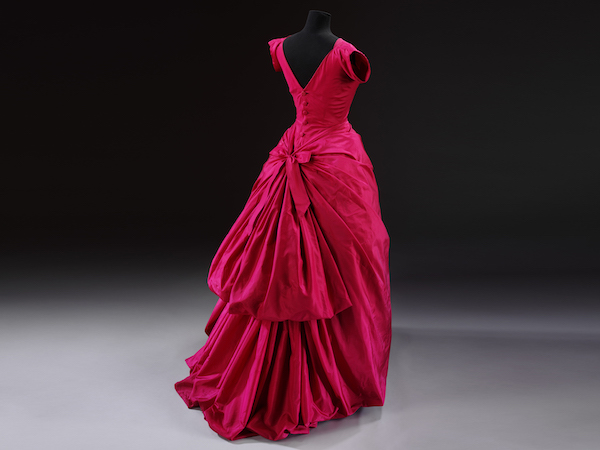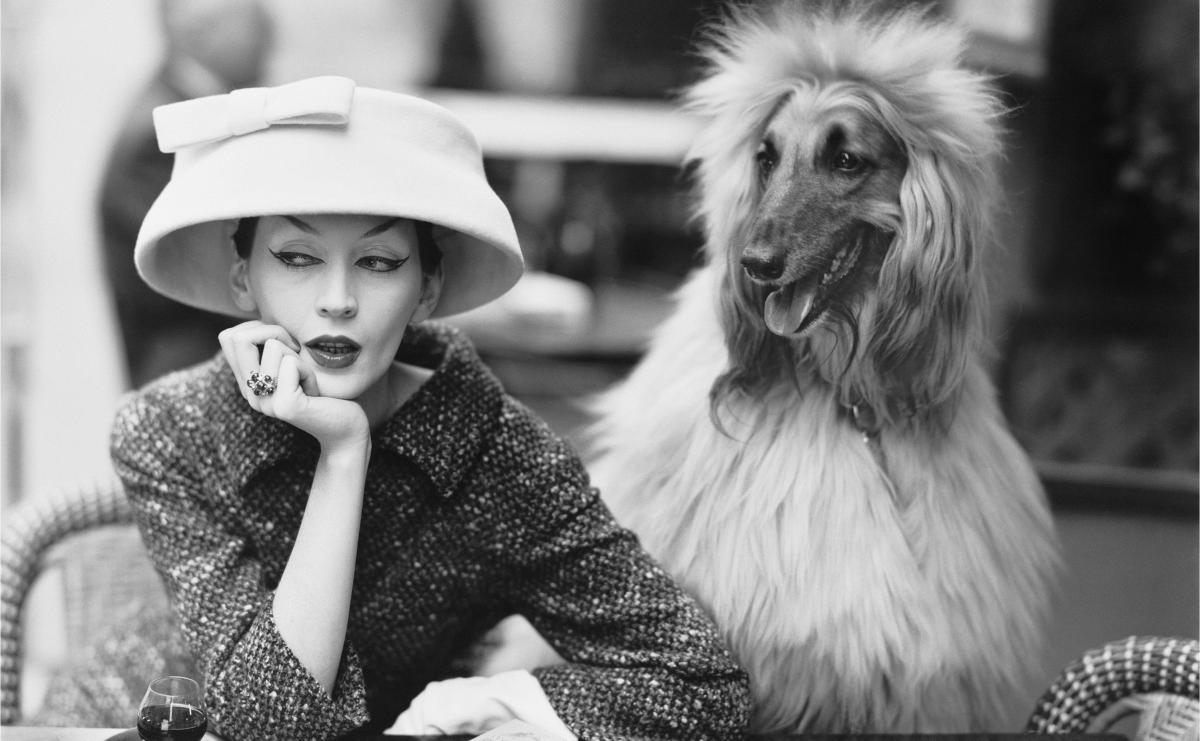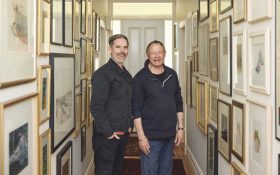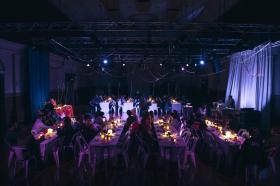Famed for his exquisite craftsmanship and innovative designs, Spanish couturier Cristóbal Balenciaga (1895 – 1972) was known as The Master of haute couture. He was one of the most influential designers of the 20th Century and his work revolutionised the female silhouette and set the scene for modern fashion.
‘We are thrilled to bring this exhibition from London’s Victoria and Albert Museum (V&A), and to continue to showcase the work of some of the world’s most important designers at Bendigo Art Gallery,’ said Director Jessica Bridgfoot.
The V&A holds the largest Balenciaga collection in the UK and has worked closely with the Bendigo Art Gallery on the presentation of this magnificent exhibition featuring over 200 pieces. And in a stylish feather in Bendigo’s cap, this is an Australian exclusive.
Balenciaga’s Spanish heritage influenced many of his most iconic designs. His iconic wide-hipped ‘Infanta’ dresses from the late 1930s drew on the portraiture of the 17th-century Spanish artist Diego Velázquez. Flamenco dresses, matador outfits, and black lace were also frequent motifs.
‘Rather than look to the canon of fashion he appropriated forms and images from his heritage: the Church, bull fighting, artists like Picasso and Francisco Goya. And his way of working, rejecting realism in the spirit of experimentation, that was a really modernist approach that continues to resonate,’ said Bridgfoot.
The exhibition showcases many of Balenciaga’s classic garments from the 1950s and 1960s and explores his remarkable style. It captures the glamour of the era and shows how Balenciaga’s designs responded to the sexual and cultural changes that were taking place in society at the time.

Silk taffeta evening dress, Cristóbal Balenciaga, Paris, 1955. Image © Victoria and Albert Museum.
Balenciaga dressed some of the world’s most glamorous women including Hollywood actress Ava Gardner, fashion icon Gloria Guinness, and the wealthy socialite Mona von Bismarck who liked to commission him to make everything from her divine ballgowns to her gardening shorts. But Balenciaga himself did not require his clients to be beautiful, saying ‘A woman has no need to be perfect or even beautiful to wear my dresses. The dress will do all that for her.’
The designer was adored by his wealthy patrons and revered by his couture contemporaries. The legendary Dior paid tribute to Balenciaga’s brilliance, saying ‘Haute couture is like an orchestra whose conductor is Balenciaga. We other couturiers are the musicians and we follow the direction he gives.’
Balenciaga is renowned for pioneering new shapes never before seen in women’s fashion. These radical designs evolved gradually as he refined and reworked the same ideas from season to season.
Volume filled the ‘balloon hems’ of his early 1950s dresses, a look that made a comeback in the 1980s. The same idea was intrinsic to his ‘semi-fit’ lines in the mid-1950s with dresses and jackets fitted at the front but with loose voluminous backs.
‘We highlight Balenciaga’s innovative approach to fabric and design through seminal garments such as the Tulip Dress with its gravity defying layers and the Opera Coat which frames wearers face as if emerging from a flower. This is my favourite piece in the whole show – it’s so bold and slightly surreal which I think is Balenciaga at his best,’ she said.
In 1957, Balenciaga shocked the fashion world with the introduction of the ‘sack dress’, a straight up-and-down shift dress which completely eliminated the wearer’s waist. This was a time when Christian Dior’s hour-glass-shaped ‘New Look’ was the height of fashion, so the ‘sack’ came as quite a shock. ‘It’s hard to be sexy in a sack!’ decried the Daily Mirror. Like many of Balenciaga’s most radical designs, this shape eventually filtered into the mainstream. The ‘sack dress’ was the forerunner of the 1960s’mini-dress and remains a fashion staple today.
‘He really revolutionised the female silhouette through an abandonment of the waistline creating seminal forms and designs ubiquitous in contemporary fashion today,’ said Bridgfoot.
Balenciaga: Shaping Fashion also explores the designer’s immense legacy, tracing his influence through the work of more than 30 fashion designers across the last fifty years. Some were his protégés; others are more contemporary designers who demonstrate the same innovative qualities in their work.
French designer Emanuel Ungaro, who trained with Balenciaga, said it was he who ‘laid the foundations of modernity’ in fashion, and both Ungaro and Andre Courrèges, another Balenciaga protégé, advanced their mentor’s minimalist aesthetic into the space-age chic of the 1960s.
The exhibition is a timely reminder of the enduring influence of his work. ‘It marks the centenary of the opening of Balenciaga’s first fashion house in San Sebastian, and the 80th anniversary of the opening of his famous atelier in Paris,’ said Bridgfoot.
That atelier, on Avenue Georges V, quickly became famous as the most expensive and exclusive couturier in that most stylish of cities. Unlike most of the other high-profile designers of the era, Cristóbal Balenciaga was a very private individual. He was not interested in being a celebrity and refused to court the fashion press, giving only one interview during his 50-year career.
‘Balenciaga was a tailor, a dressmaker and a couturier all in one – and a famous perfectionist. He combined this perfectionism with a sense of artistry and was not afraid to experiment with bold shapes and line – working more like a sculptor but with a couturier’s sensibility,’ said Bridgfoot.
The closure of Balenciaga’s fashion house in 1968 marked the end of an era and he died just four years later. Even so, his innovative pattern cutting, use of new materials, and bold architectural shapes have remained greatly influential. He continues to be an inspiration to those who follow in his footsteps and his work still shapes fashion today.
Alongside many iconic garments Balenciaga: Shaping Fashion includes archive sketches, patterns, photographs, fabric samples and original catwalk footage. It also displays the results of new, forensic investigations into the garments undertaken by the V&A. These include a collaboration with British X-ray imaging artist Nick Veasey, and a digital pattern making project with the London College of Fashion, to reveal the hidden details and processes which made Balenciaga’s work so exceptional. Together, these offer a unique insight into the life of the designer and his salons and workrooms.
Bendigo Art Gallery has an exciting range of events lined-up to accompany the exhibition. These include a new Thursday evening series, Behind Balenciaga, offering an afternoon exhibition viewing, a glass of wine, and an illustrated lecture with guest presenters, where guests will examine Balenciaga’s legacy and broader context. And in October, the Gallery will launch a new season of Friday Nights after Five, with late night exhibition viewings, a pop-up lounge, pampering sessions and luxe canapés.
‘The exhibition isn’t just for fashionistas. It offers a fascinating glimpse into the life of the social elite of the mid-twentieth-century, and the ceremony and ritual of Paris in the heyday of couture. It’s also the perfect reason to visit Bendigo in the Springtime,’ said Bridgfoot.
Balenciaga: Shaping Fashion is at the Bendigo Art Gallery from August 17th to November 10th. Tickets are now on sale via the website.





